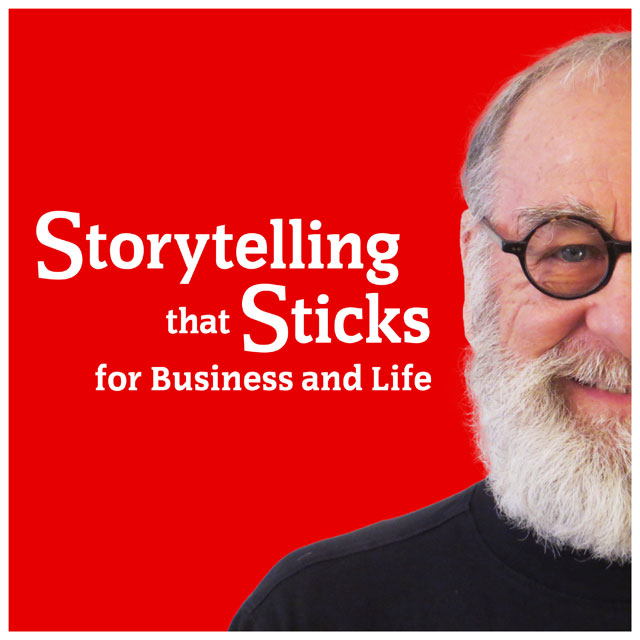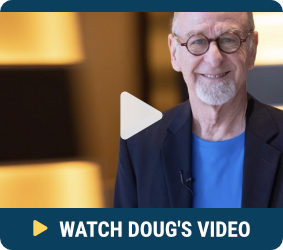The Healing Power of Stories by Doug Stevenson
Over the last 16 years, while working with hundreds of people on the telling of their stories, it has become clear to me that storytelling can be a healing process for the storyteller as well as for the listener.
This happened to me personally just last month. I participated in a local evening of storytelling called The Story Project. The theme for the evening was Actors, and because I used to be an actor, I was invited to take part.
Over 38 years ago, when I was a young actor in Hollywood, I joined an experimental theater company. One night we did an exercise called Outer Theater. The task was to find a partner and then go out into the surrounding community and do something we would never do. It had to be a risk, something outside of our comfort zone.
My partner and I decided to go streaking. As it turned out, we not only went streaking, we got caught by some overly zealous cops and got arrested…naked.
During that time while I was in Hollywood, I had wanted to try my hand at stand-up comedy, but I never felt that I had any good material. After getting arrested naked, I felt like I had something funny to work with.
A couple of weeks after the streaking experience, I went to an “open mike” night at a comedy club and told my streaking story. No one laughed. I tried it again at another comedy club and once again, no one laughed. I tried to use that story as comedy material at five different clubs before I gave up. I decided that I just wasn’t funny.
Life moved on and long after I left Hollywood, I discovered how to tell my streaking story so well that it became the one story I could always count on for laughs. In fact, the revelation and analysis of how I told that story became the foundation for The Story Theater Method.
Fast forward to December 13, 2012, the day before I was to present the streaking story for The Story Project. I was doing some research by watching a You Tube video of people telling their stories onstage in the Story Project theater. The setup was a microphone on a stand with a red brick wall behind. It looked exactly like one of the clubs where I’d bombed in Hollywood.
During the day, I noticed that I was getting anxious. I was getting all plugged in to the emotional states that I had experienced so often in Hollywood. The thought of stepping onto that stage and telling the same story that caused me to feel like a failure, was making me crazy, over 35 years later. I finally realized that those comedy club experiences had created an emotional wound that had never healed.
But it made no sense. In my mind I knew that my streaking story was one of my best stories and that it had worked in front of hundreds of corporate and association audiences. But in my gut I felt like a struggling 24-year old actor. The emotional wound from the comedy club failures was very real and present.
That evening, when I got to the Story Project theater I started to relax. I was no longer a scared kid in Hollywood trying to prove myself. There would be no Hollywood agents in the audience looking to discover the next Jim Carrey. I was now a 62-year old successful adult in another time and place with nothing to prove to anyone – except to myself of course.
The people in the audience were just local folks who loved to hear good stories. A number of my friends had come to support me. And of course my loving wife, Deborah, was by my side. Suddenly, I was very calm.
I was the fourth of four storytellers. While the other storytellers did their presentations, I listened and laughed and was totally present with them. When it was my turn, I performed my Streaking Story the way I have now performed it hundreds of times. The audience howled with laughter and at the end, I got a standing ovation.
Afterwards, as people came over to congratulate me, I basked in the glow of success. I had faced the old demon emotions of fear and insecurity and I had prevailed.
The next day, as I was re-living the experience, I realized that by telling my story in that particular venue, I had healed the emotional wound of failing at all of those comedy clubs. I had told the same story, in a very similar environment, and this time I was hilariously funny.
We all know that stories have the power to heal our audiences. What I have also learned from helping my students is that they can be healed themselves, through the telling of their most painful and intimate stories. And now I understand that firsthand, for myself. A part of me was healed last month.
How about you? What story do you need to tell that will heal an old unresolved wound? Isn’t there an old saying: “Storyteller, heal thyself?” or something like that! Be brave and use your stories to heal your audiences, and to heal yourself.
Doug Stevenson is president of Story Theater International, a speaking, training and consulting organization, previously based in Colorado Springs, CO; now based in Tucson, Arizona. He is the author of Doug Stevenson’s Story Theater Method and is the creator of The Story Theater Method for strategic storytelling in business, and the How to Write and Deliver a Dynamite Speech System. He can be reached at 1-719-310-8586; or by emailing Deborah@DougStevenson.com. Find out more, and sign up for the free Next Level Storytelling Newsletter at www.storytelling-in-business.com.
Copyright, Doug Stevenson, 2013. All Rights Reserved. Printed in the United States of America. Except as permitted under the United States Copyright Act of 1976, no part of this publication may be reproduced or distributed in any form or by any means, or stored in a database or retrieval system, without the prior written permission of the author.









